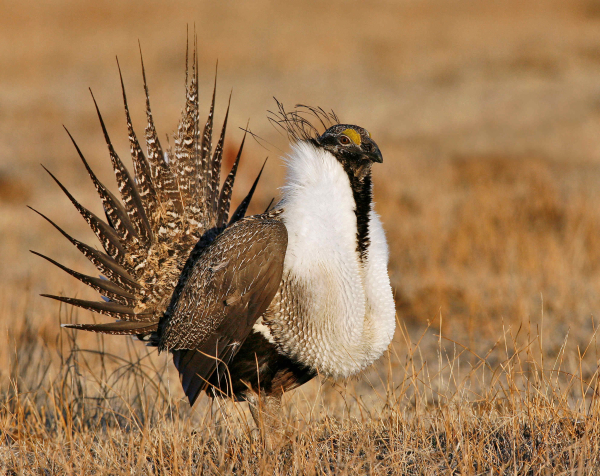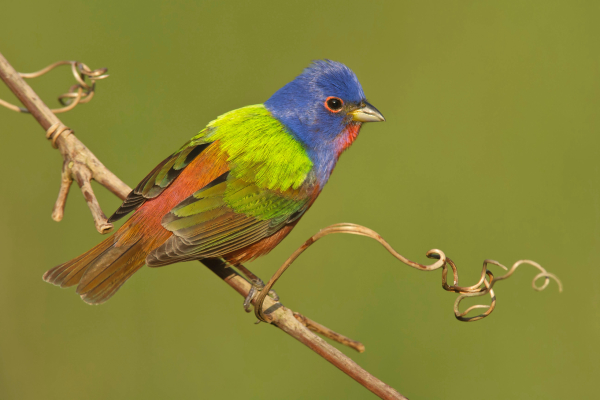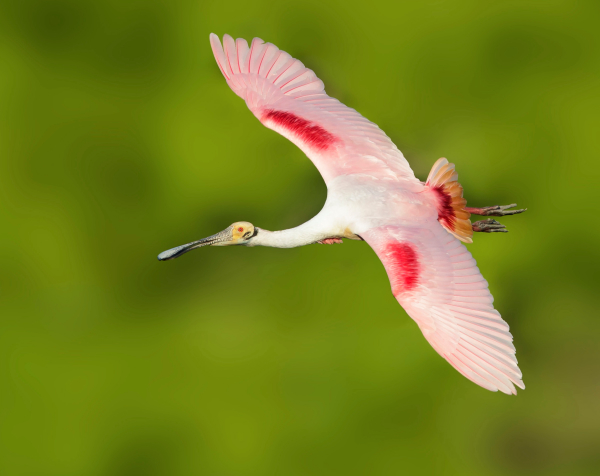Part of my personal success in bird photography can be attributed to viewing and studying other photographers’ work, primarily bird photographers – or more generally, the photos of wildlife photographers. As a result, I try to emphasize action photos whenever possible, and I emphasize composing photographs in different ways, positioning birds to one side or another rather than centering them in the frame. I’m always aware of how light affects the colors and shadow areas of birds, and sometimes it’s nice to try to add some of the surrounding environment whether it’s plants or water, or even sky and clouds.
Take a closer look at your favorite photos, enjoy the process and analyze the qualities you like best in your own images. Then take a look at selections of bird photos on the websites of professional and local photographers for some ideas and guidance. Studying the way the pros compose and frame their photos of birds is a simple process that can help you improve your own photography in big ways – one photo at a time.

As you view a selection of photos, study how the photos are lighted, what direction the light is coming from, and why some photos have such vibrant colors. Likewise, analyze how the photographer is able to stop action, or how they use a slightly blurred action to add some life to certain images. See how using a uniform background helps to emphasize the bird – either against a clear sky, water, snow, or distant green or tan vegetation. Also appreciate the use of the surrounding environmental elements in given photos – leaves, flowers, buds, branches, rocks, sand, etc.
After reviewing a few other photographer’s work, you will be pleasantly surprised about how much you can improve your own photography, as well as hone your instincts in the moment when you’re photographing in the field. It’s fun and even relaxing to inspect other photographer’s select images. To get you started, permit me to share some of my favorite photographers’ photo galleries on their websites, listed below so you can review their work and glean what you can from the process.

I received a lot of inspiration by viewing the photographs of Frans Lanting, Tom Mangelsen, and Art Wolfe, who are all remarkable wildlife photographers who have developed exceptional portfolios of many different subjects; but today they feature few bird photos in their galleries. Don’t hesitate to check out their astonishing website photos for inspiration, along with that of wildlife artist Robert Bateman, who likewise provided a lot of early inspiration for me. But to emphasize bird photography, I’m going to share with you two Bird Photographers who are strongly focused on photographing birds with exceptional levels of quality: Brian Small and Kevin Karlson.
I have been lucky enough to see both of these premier bird photographers advance from really good photographers to the best bird photographers in North America, and I’m especially glad to call them friends. You will note their names in the photo credits in a number of photography-based field guides, magazines, and birding books, and they are also co-authors of their own field guides and birding publications.
Brian and Kevin’s websites offer a wealth of inspiration for any photographer – beginner or advanced – and they are perfect examples of how the best of the best have evolved from good hobbyists to their present level of excellence. See Brian Small’s portfolio at https://www.briansmallphoto.com/home.html and especially work your way through his Taxonomic List to view the varied images of some of the species listed at https://www.briansmallphoto.com/taxonomic.htmlNote how a single bird offers a variety of images, and how different birds and lighting conditions can vary the look of the images. Be sure to review photos of such rarely photographed birds as Harlequin Quail, a Steller’s Eider, and Elf Owls to name a few.

An intro to Kevin Karlson’s gallery is provided at https://www.kevintkarlson.com/birds---nature but to see his individual style that often emphasizes action, flight, or implied action in a variety of ways see http://www.kevinkarlsonphotography.com/gallery/main.php My favorites tend to be Kevin’s photos of Arctic species and raptors, but he has a great diversity of photographs to share with you.
Keep in mind that some of these bird photos may emphasize portraits of birds, but that’s partly because many of their bread and butter photographs are used by field guide authors and similar publication interests. Some of the framing is also done to include an open area at the top to fit a magazine or book title – one of many pro elements you may notice. More often, photographers will provide a little extra space for the bird to walk into, look into, or fly into, which you can see in the three photos accompanying this article taken by Brian Small.
Each photo can yield some insights; as you review the photos, appreciate the good and best, and look for new or improved ways that you can illustrate birds with your camera. Don’t hesitate to take a few notes to describe some tips and ideas you may glean, and keep a record of where that insight came from in case you wish to revisit the photo or photographer where you learned that technique.
Actually, you can also take this kind of learning experience to another level or two. Some photographers offer a number of how-to tips, descriptive articles, or instructional videos on their websites, and some lead photo workshops at an interesting location, often at a favorite birding hotspot in season. Some local photographers, nature centers, and birding festivals may also schedule a bird photography workshop or class that will be helpful in developing your photo activities beyond the norm. That’s the enjoyable thing about photography – you never know it all, and you always have new photos to look forward to – onward and upward.
Article by Paul Konrad with photographs by Brian Small
Share your bird photographs and birding experiences at editorstbw2@gmail.com